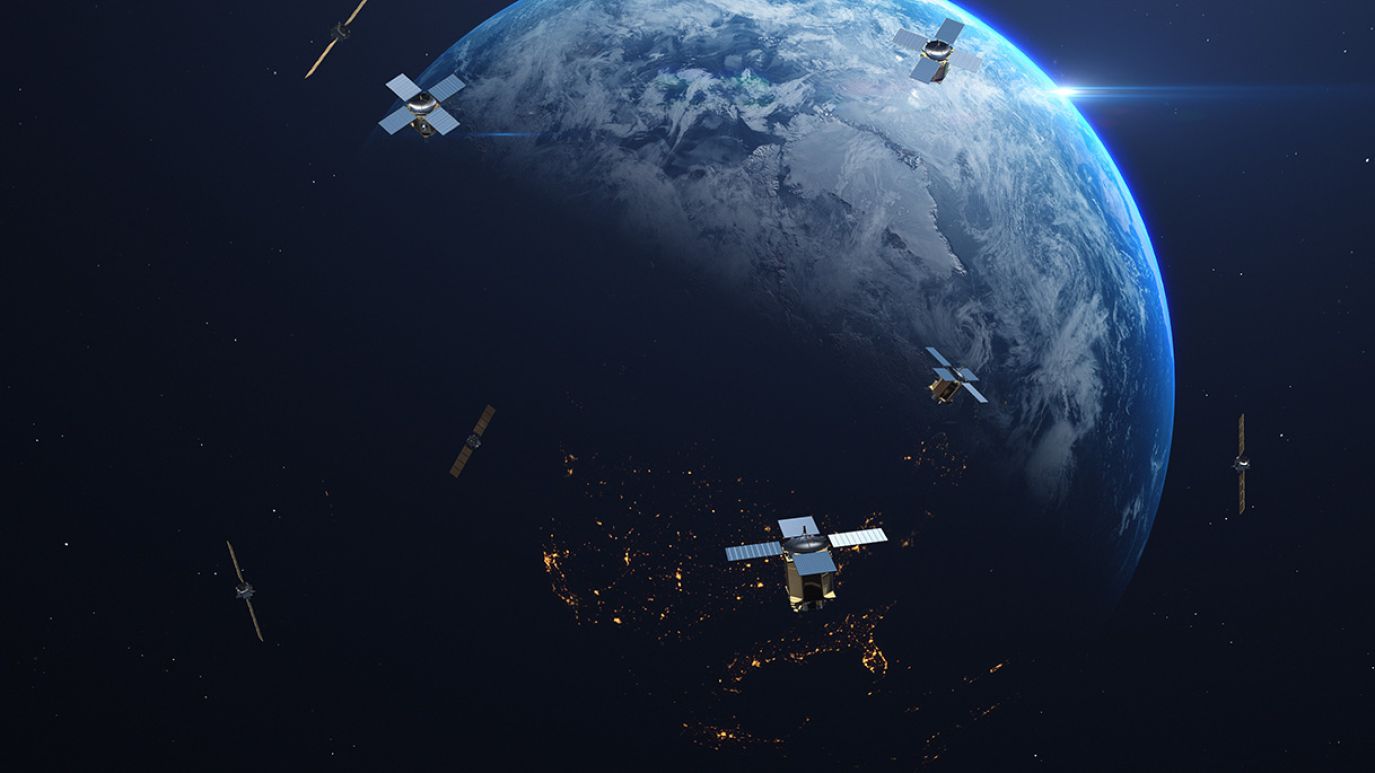-
Blog
LEO satellite operators racing for strategic advantage in satellite retirement and space-debris removal

Amidst growing concern over the impact of planned atmospheric LEO satellite disposal on the climate and the growing issue of space junk, governments, space agencies, and satellite operators around the world are racing to gain strategic advantage.
The growing issue of space debris, and how to clean it up, has been highlighted by the decision of Elon Musk’s SpaceX, which was announced on 12 February 2024, that it is set to dispose of 100 of its Starlink satellites over the next six months due to a design flaw. It plans to ‘de-orbit’ the craft by burning them up in the atmosphere, but it has re-ignited concern about the growing amount of space debris.
Currently, there are 8,259 low-earth orbit (LEO) satellites in the atmosphere[1]. And there is growing concern from space researchers, agencies, and governments about the impact that this method of retiring satellites is having on the Earth’s atmosphere and climate. Recent research has found that potentially ozone-depleting metals are created by satellites burning up in the atmosphere as they are de-commissioned.
Atmospheric disposal of defunct LEO satellites
LEO satellites are designed to use any remaining fuel and then use the Earth’s gravity to re-enter the atmosphere, often at a location known as the ‘spacecraft cemetery’ – the most remote part of the Pacific Ocean at Point Nemo. Satellite operators must prove they have designed satellites for re-entry with a low ‘human-hit rate’ before they are awarded a license. NASA and the European Space Agency (ESA) promote this kind of disposal.
But some climate scientists have found that the metals emitted during re-entry could be creating high-altitude polar stratospheric clouds – also known as mother of pearl clouds – which act as catalysts that turn benign chemicals into more active forms that can deplete ozone, as highlighted by decades of research into human-created industrial gases. These clouds let heat from the sun pass through but prevent it from leaving.
The research is still uncertain, but there is a growing awareness that there is a need to start mitigating space debris and pollution. However, there is no controlling body to assure this – no international air traffic controller for space.
Most countries have embraced a mutual understanding that satellites should be de-commissioned after 25 years. However, on 29 September 2022, the US Federal Communications Commission (FCC) adopted new rules requiring satellite operators in LEO to retire satellites within 5 years of completing their missions.
Japan sees golden opportunity in space-debris removal
But there is potential for the job of cleaning up space debris to become lucrative and strategically important. For example, Japan has lagged behind the US (2,926 operational satellites), China (493), the UK (450), and Russia (167) – Japan has 90[2]. But it sees space-debris mitigation as a golden opportunity to become a significant player.
In recent years, it has stepped up collaboration with the US in response to China’s growing space capabilities and wants to be at the forefront of the expanding market in space-junk removal. Japan is moving fast. Its Aerospace Exploration Agency is working with Tokyo-based Astroscale to complete its first debris-removal mission, with plans to offer routine removal services by 2030.
Alongside Astroscale, the Japanese government began the process of trying to create regulations for space-debris-removal with the aim of making transparency the norm.
Likewise, China sees an opportunity. In January 2022, China’s Shijian-21 space-debris mitigation satellite docked with a defunct Chinese satellite Beidou-2 G2 navigation satellite and towed it out of the crowded LEO range to 36,000 km geosynchronous equatorial orbit, or GEO, which is considered to be above 35,786 km – the over-crowded LEO range has an altitude of 2,000 km or less. Prior to that, only the US had demonstrated such capabilities.
China notified the United Nations Office for Space Affairs in 2021 in advance of its action – which was considered a good sign that Beijing wants to be transparent. However, cooling relations between China and the West in recent years have made matters more uncertain about Beijing’s transparency intentions in space.
Western space-junk removal companies still nascent, but building
The efforts of companies in North America, Europe and Australia are still nascent, but making headway. Lockheed Martin and Raytheon, and Obruta Space Solutions in Canada have been contracted with space agencies to develop debris-removal technology. The Swiss start-up ClearSpace is also working with ESA to do the same.
Chinese companies are also focusing on the issue. Origin Space, a space-mining start-up based in Shenzhen, last year launched a prototype of a robot that can snag space debris with a large net. Conversely, Russian space agency Roscosmos has been criticized globally in recent years for adding to the space debris problem by blowing up its own satellites in anti-satellite tests.
Space-junk removal – regardless of the process used – is becoming imperative and is seen as a strategic (and financial) opportunity for many nations. That’s why the leading satellite operators – the US, China, UK, and Japan – are racing to gain an advantage.
[1] https://orbit.ing-now.com/low-earth-orbit/
[2] https://nanoavionics.com/blog/how-many-satellites-are-in-space/
China’s 5G influence in developing economies
China’s Belt and Road Initiative and its digital counterpart, the Digital Silk Road, threaten to displace US telecom and tech companies in developing economies in Africa, Latin America and the Middle East. How can US operators and network providers stand up to the challenge?